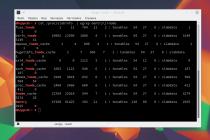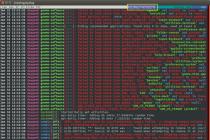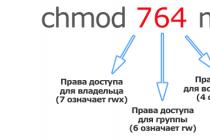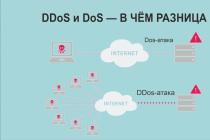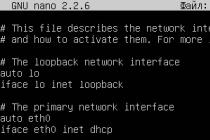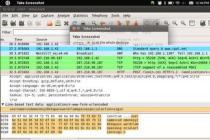AMD processors. We will also consider software tools with which this rather complex operation can be performed. In addition to this, practical advice as to which of them in each situation is most optimal to apply. In addition to this, a list of CPUs relevant to the given manipulation will also be provided.
Which CPU models are suitable?
Before learning how to unlock cores AMD processors, consider the CPU models suitable for this manipulation. This list includes the following families of chips from this renowned computer manufacturer:
- Septron microprocessors can be converted from single-core to dual-core. This allows you to increase, albeit slightly, the speed of work. personal computer.
- The Athlon II line of computing devices in 2- and 3-module versions can be converted into a quad-core CPU. In turn, some models of this family of microprocessors can be turned into a similar chip of the Phenom II series with a three-level cache memory system. Accordingly, the speed of the computer will also increase.
- Younger Phenom II chips can be transformed from dual- and triple-core models into four-block ones, just like the previously reviewed Athlon II chips. Again, the speed of work increases due to the increase in code processing modules.
All previously stated transformations are relevant for the AM3 platform. Later AMD sockets no longer support this operation.

Implementation methods
Now let's figure out how to unlock AMD processor cores using software tools... This operation can be implemented in two ways. One of them is using the BIOS system. This method can be used only on newer versions of motherboards, in which an option has been added to the ACC / UCC menu. The second option for enabling unused hardware resources is reduced to using special utilities. This method of activating kernels is available on any motherboard.
BIOS. Algorithm of use
Now let's figure out how to unlock the cores of AMD Athlon processors and other chips within the AM3 socket using the BIOS. Again, this method is only applicable for those motherboards that were released in 2012 or later. A special ACC item (for AMD chipsets) or UCC (in the case of using a system logic set from NVidia) has been added to the BIOS menu in each of them.
In both the first and second cases, the implementation algorithm is as follows:
- When you turn on the computer system, you need to press the F2 button when the test window appears in order to enter the BIOS.
- Next, you need to use the navigation keys to go to the menu item called Advanced and open it using the "Enter" key.
- At the next stage, we find the ACC / UCC sub-item, translate the pointer to it using all the same navigation keys.
- Then, using the PgUp and PgDn buttons, set it to the Enabled state.
- We save the changes. To do this, just press F10. Next, you will be prompted to save the changes. We answer positively to it.
- After that, a reboot will occur. Next, you need to check the stability of the PC after the manipulations performed according to the method that will be described later.
If the computer is unstable, then using the JP1 microswitch on the motherboard, we return the BIOS parameters to their original state.

Specialized software
This method is most often used on older versions of motherboards. But it also applies to their newer modifications. That is, it is quite versatile. Like the previous method, this method allows you to turn a low-performance Athlon II series chip into a high-performance AMD Phenom 2 X2 processor for example.
Each motherboard manufacturer offered its own utility for this purpose. For example, Gigabyte recommended using the CPU Unlock program. It could be found on the CD motherboard manufacturer of the same name.

Functional check
This review covered how to unlock AMD Phenom processor cores and more. After performing this operation, it is highly recommended to check the stability and reliability of your computer.
To do this, at the first stage, you need to install specialized program CPU-Z. Then run it and check in detail the parameters of the microprocessor.
Next, you need to install the specialized utility AIDA64 and use it to carry out a comprehensive check of the PC. If the computer starts to work unstable, then we reset the BIOS parameters to their original state using the same JP1 switch. You can also try to return the system software to initial state with an integrated program operating system.
Relevance of the operation
V this review the main ways of how to unlock the cores of AMD processors were described in detail. The FX - 4300 and other newer CPUs designed to be installed in the AM3 + socket no longer allowed such an operation. That is, only within the framework of the computer platform this practice received the greatest distribution.
Again, these microprocessor models were relevant in 2010 - 2013. Now this platform is outdated. Therefore, a radical improvement in performance due to the activation of additional cores will definitely not be achieved.

Conclusion
This review article was devoted to how to unlock the cores of AMD processors within the AM3 computing platform. At the time of the appearance of such chips, this operation contributed to the growth of sales of the previously reviewed CPU modifications. Now it is outdated and is not suitable for the implementation of high-performance computers.
The most rational way to activate disabled resources is to use special utilities. But it is easier to do this using the BIOS. Therefore, if possible, we use the latter method. If the computer has old version motherboard, you can use a more complex method, which is based on specialized software.
This work was submitted to our "open-ended" article competition.
Introduction
Many novice overclockers are faced with the problem of overclocking Athlone XP locked in the substrate. They have been produced since the 39th week of 2003. Models with an unlocked multiplier are not particularly difficult to overclock, but we will consider a locked Athlon XP 1800+ marked JIXIB0339SPDW, which fell into my hands. I tried all methods of changing the multiplier, but nothing worked. And then I came across an article about converting Athlone XP into a mobile Athlone XP. But it was short and not entirely clear for those new to this business, so there were requests in the conference for more full information on alteration, give an example and conduct tests.
advertising
Having studied a lot of information on this topic on the Internet, I decided to write this article. In it I will try to give the most complete and available information with an example of converting Athlon XP into a mobile Athlon XP. I apologize in advance for the lack of a photo of the converted processor (I have no opportunity). Instead, with the help of drawings, I will try to depict the experience I have done.Theoretical material.
Probably not everyone knows that in the production of processors, the so-called "blanks" of processors of a certain frequency with closed bridges are first made. Moreover, the "blanks" of the mobile Athlone XP and the usual Athlone XP are no different. Then, according to the need of certain processors, the "blanks" are sent for processing. What is it? With the help of a laser beam, certain bridges are cut and the "blank" is converted into a work processor. In which? It all depends on the cut bridges.
Hello dear friends, Artyom is with you.
In today's post we will talk about overclocking processors from Intel.
As you know, all Intel desktop processors fall into several main classes. Pentium, Core i3, Core i5, Core i7.
In this case, processors with the prefix "K" (for example, Core i5 4670K) can be easily overclocked by raising the processor multiplier. Such processors have a so-called unlocked multiplier.
Intel Core i3 and Pentium cannot be overclocked this way (except for the Pentium G3258, and the new Core i3-7350K).
If the processor does not have the “K” prefix in its name, then it is almost impossible to overclock it. Is it possible to raise the frequency of the base oscillator (100 MHz), which, when multiplied by a static multiplier of the processor, will also raise the frequency of the latter. However, this can be done within extremely limited limits.
In this case, the processor will overclock by only a hundred MHz. Plus, you can get system malfunctions, since other frequencies are also tied to the frequency of the base generator - for example, PCI-Express buses. Due to the increase in the frequency of the base generator, the frequency of the PCI-E bus will also increase proportionally, which is why HDD(SSD) may fall off the system. So the frequency will have to be set to default again.
What to do in this case? Is there a way out? There really is a way out. If you are using pre-generation processors Intel Haswell(Corei 2xxx, Corei 3xxx), then one interesting life hack is available to you.
You can raise the processor multiplier up to 4 stops from the maximum TurboBoost multiplier of your processor.
P.S. Let me remind you that Turbo Boost technology dynamically overclocks the processor cores if the application requires increased productivity and the processor does not go beyond a certain thermal package. This is, if very briefly, but at this stage this explanation I think will be quite enough.
For example:
Core i5 2400 processor
Base frequency: 3.1 GHz = (100 MHz x multiplier of 31)
Maximum Turbo Boost Multiplier during normal operation: 34
Maximum Possible Turbo Boost Multiplier: 38
That is, the processor can be overclocked to 3.8 GHz. An increase from the base frequency of 700 MHz. In my opinion it is very good.
In this case, the Turbo Boost technology will be active, even in the case of overclocking.
P.S. Turbo Boost multipliers are configured in the BIOS (UEFI) of your motherboard.
Unfortunately, processors with a partially unlocked multiplier are only for the second and third generation Cores. Since Haswell, this option no longer exists.
I hope that this information helped you. Unsubscribe in the comments, are you overclocking your processors?
If you liked the video clip and note, then share them with your friends on social networks.
The more readers and viewers I have, the more motivation to create new and interesting content :)
Also, do not forget to join the Vkontakte group and subscribe to the YouTube channel.
Introduction Overclocking has long ceased to be an art for the elite; today it is a massive phenomenon in which not only computer enthusiasts are involved, but also hardware manufacturers and sellers. The army of overclockers is so numerous that even such giants as Intel cannot ignore it. As a result, over the past few years, we have been able to observe how various companies that produce components are not only actively adapting their products for overclocking, but also mastering the release of specialized overclocking products. In particular, in the processor market, such specialized products are, first of all, processors with an unlocked multiplication factor. They open up an easy way to increase their clock speed, which eliminates the additional requirements for the rest of the platform and can ultimately lead to the conquest of record overclocking peaks.
Until recently, AMD has especially shown its favor towards overclockers. In its assortment there are several processors of the series at once Black Edition(with multiplier unlocked) related to various price categories... Moreover, this company even offered specially selected TWKR-modifications of processors, capable of working with a very aggressive increase in supply voltage. Intel, on the other hand, has been more conservative in its attitude to overclockers: the company's specialized offerings over the past few years have been limited only to extremely expensive $ 1000 CPU models with an unlocked multiplier.
But the realities and the massive interest in overclocking forced the microprocessor giant to toss and turn. About a year ago, in order to study demand, Intel conducted an experiment and offered an inexpensive LGA775-processor Pentium E6500K with an unlocked multiplier factor in the regional Chinese market. The experiment apparently yielded positive results as the decision was made within the company to expand this initiative. And in the very near future, and more specifically at the upcoming Computex exhibition, Intel intends to announce at once a couple of widely available overclocking processors with an unlocked multiplier for the LGA1156 platform, the most relevant at the moment.
Will be presented - a quad-core Core i7-875K and a dual-core Core i5-655K. From the point of view of formal characteristics, these CPUs will become analogs of the long-supplied Core i7-870 and Core i5-650, but unlike them, they will offer a freely changeable multiplier, which opens up additional opportunities for overclocking. What is especially pleasant is that Intel is not going to consider overclocking models as exclusive offers, and they will be set at a very affordable price, which differs from the cost of “regular” models by no more than 20-25%.
As a result, enthusiasts will have a very extensive selection of unlocked multiplier processors, which will now be available for almost any current platform.
As you can see, the new items fit quite organically into the structure of existing overclocking offers. Nevertheless, the release of the Core i7-875K and Core i5-655K is unlikely to cause any serious changes in the market: so far overclockers have successfully used Core i7-860 and Core i5-650 to overclock, and new models are more expensive. Yes, they can be overclocked by simply changing the multiplier, but overclocking by increasing the frequency of the base clock generator in most cases gives quite normal results. In other words, the release of the Core i7-875K and Core i5-655K is a great image step that enthusiasts-record holders engaged in extreme overclocking and really face with the instability of motherboards due to an excessive increase in the frequency of the base clock generator can really rejoice. But are these processors really needed in conventional overclocked systems?
Core i7-875K and Core i5-655K specifications
From the point of view of formal characteristics, the new overclocking processors cannot boast of any features that distinguish them from their counterparts. Clock frequencies, the number of cores, the size of the cache memory, proprietary technologies, the calculated heat dissipation - everything is exactly the same as in the well-known ones. Core processors i7-870 and Core i5-650.
It is difficult to notice the differences from the available models from the screenshots of the diagnostic utilities. For example, in CPU-Z, new processors are allocated only with an identification string with a name.


Note that the Core i7-875K is based on the B1 stepping core, while the Core i5-655K is based on the C2 stepping core. This means that these processors use the same versions of the semiconductor crystals as in conventional, common models. Consequently, new overclocking processors are unlikely to be able to offer their owners any special frequency potential, and their only distinguishing feature is a free multiplier.
Nevertheless, Core i7-875K and Core i5-655K act as products of a special kind, they do not replace, but complement the existing the lineup LGA1156 processors. To accentuate this, the new items will be delivered in special packaging, on which the word "unlocked" will be highlighted.

By the way, overclocking processors will be sold without a traditional cooler. Intel rightly judged that enthusiasts purchasing an unlocked multiplier processor would prefer to choose a cooling system on their own.
Intel officials promise that the new processors won't have any compatibility issues with existing motherboards. Which, in general, is completely unsurprising, because there is nothing really new in them. However, in order to get full access to the ability to change the multiplier, updating the BIOS on the motherboard may not be superfluous.
Overclocking experiments
Although the new Core i7-875K and Core i5-655K processors with an unlocked multiplier do not promise any breakthrough in overclocking, it is still interesting to look at their frequency potential. For a practical acquaintance with the new products, a test system was assembled consisting of:
Maternal ASUS board P7P55D Premium (LGA1156, Intel P55 Express);
Memory 2 x 2 GB, DDR3-1600 SDRAM, 9-9-9-24 (Kingston KHX1600C8D3K2 / 4GX);
ATI Radeon HD 5870 graphics card;
Western Digital VelociRaptor WD3000HLFS hard drive;
Thermalright Ultra-120 eXtreme CPU cooler with Enermax Everest fan;
Power supply: Tagan TG880-U33II (880 W).
The purpose of our testing was to determine that maximum frequency, which can be achieved by overclocking the Core i7-875K and Core i5-655K processors by changing the multiplier.
Core i7-875K
When this processor was installed in the test system, the metamorphoses that occurred with Motherboard BIOS boards.
The CPU Ratio Setting, which is responsible for setting the multiplier, now allows the choice of any values from 9x to 63x, but this was quite expected. A much more interesting event was the appearance additional parameters TurboMode x-Core Ratio Offset, giving full control over Intel Turbo Boost technology.

These settings give you the ability to control the limits of the processor frequency change within the Intel technology Turbo Boost. That is, for a processor with an unlocked multiplier, you can manually set the scale of the clock speed increase in turbo mode when 1, 2, 3 or 4 cores are active.

Unfortunately, the pleasant surprises ended there. The Core i7-875K does not provide any additional multipliers for setting the DDR3 memory frequency, nor the ability to change the operating frequencies of the Uncore part of the Core i7-875K processor. This means that the Uncore frequency is tightly coupled to the base frequency (BCLK) and, using its nominal value of 133 MHz, equals 2.4 GHz. The choice of memory frequencies at the nominal value of BCLK is limited to a set of 800, 1066, 1333 and 1600 MHz.
Let's go directly to overclocking. Core i7-875K provides full access to the multiplication factor, and its increase does not entail any changes in the operation of any subsystems except for the computing cores. So the overclocking algorithm is completely elementary, it does not require changing the memory frequencies or increasing the voltage on the Uncore part of the processor. It is enough just to increase the multiplier and raise the processor voltage.
By increasing the processor voltage to 1.35 V, which can be considered a completely safe level when using air cooling, we managed to achieve stable operation of the CPU at a frequency of 4.0 GHz.

This is a completely normal, but not outstanding level of overclocking for processors based on the Lynnfield core. However, we did not expect anything else, because the Core i7-875K is just another representative of a familiar family. So only one thing is remarkable in the result obtained - to achieve it, we did not increase the frequency of the base clock generator BCLK, and, therefore, did not impose any additional load on the motherboard.
Core i5-655K
The unlocked dual-core Clarkdale, as well as Lynnfield, provides full access not only to the "base" multiplier, but also to the Turbo Boost technology, allowing you to use different arbitrary multipliers chosen by the processor depending on the load of its cores. That is, in this respect, the capabilities are the same as when using the Core i7-875K. However, unlike the quad core, the Core i5-655K also offers extended memory frequency settings.
Conventional, non-overclocking Clarkdale processors, when using the nominal base clock frequency (BCLK) of 133 MHz, can clock memory as DDR3-800, DDR3-1066 or DDR3-1333. Lynnfield processors, including the Core i7-875K, add DDR3-1600 to this list. In the Core i5-655K, the coefficient that forms the memory frequency was completely unlocked, thanks to which the memory controller of this processor can clock the memory as DDR3-1866 or DDR3-2133 without increasing the BCLK frequency.

As for the actual overclocking, with an increase in voltage to 1.35 V, the Core i5-655K processor was able to operate at a multiplier of 33, that is, with a frequency of 4.4 GHz. The system in this state remained completely stable, which was confirmed by testing using the LinX 0.6.3 utility.

And again we see quite ordinary overclocking, despite the fact that a special overclocking processor was used in the test. This once again confirms that Intel does not select semiconductor crystals in any special way for the production of its unlocked new products. In terms of their frequency potential, the Core i7-875K and Core i5-655K are fully comparable to other variants of Lynnfield and Clarkdale. So, apart from free multipliers, these processors cannot boast of any other obvious advantages.
Consequently, the use of the new Core i7-875K and Core i5-655K processors in overclocking systems can be justified only when overclocking by increasing the multiplier factor for some reason does not fully reveal the full frequency potential of the CPU. And this is possible only in two cases. Or when using a "bad" motherboard that does not have the necessary settings to change the BCLK frequency and voltages in memory and Uncore. Or with extreme overclocking of the processor, when it comes to increasing its frequency by more than 50%, which requires raising the base frequency of the BCLK far beyond the 200 MHz boundary, after which stability problems associated with motherboard.
Which is Better: BCLK Frequency vs Multiplier
The appearance on the market of the Core i7-875K and Core i5-655K will lead to the fact that in the vast majority of overclocking LGA1156 systems, if we are not talking about using extreme cooling methods, overclocking can be performed with equal success both by increasing the clock generator frequency and by changing multiplication factor of the processor. Naturally, in such a state of affairs, a quite reasonable question arises - which overclocking option is more profitable.To be clear, we decided to test the Core i7-875K operating at 4.0 GHz in two versions: when the BCLK frequency is increased to 200 MHz to achieve this milestone, and when the BCLK remains at the nominal 133 MHz, and the multiplier is increased. It should be noted that in the case of overclocking by increasing the frequency of the base clock generator, we even slightly lowered the multiplier to 20 (this action can be performed in any system, even with an unlocked processor) in order to achieve full compliance in the memory frequency. As a result, two similar systems participated in the comparison:
Core i7-875K processor @ 4.0 GHz = 20 x 200 MHz, DDR3-1600 (9-9-9-24-1T) memory
Core i7-875K processor @ 4.0 GHz = 30 x 133 MHz, DDR3-1600 (9-9-9-24-1T) memory
The screenshots show that the difference in approaches to overclocking entails a difference in the frequencies of the Uncore and the QPI bus. An increase in BCLK above the standard 133 MHz leads to a proportional increase in the frequency of these nodes. It is these factors that determine the performance differences observed in the tests.

As the benchmark results show, the difference in overclocking methods really affects performance. And overclocking turns out to be more profitable by increasing the BCLK frequency, and not by changing the processor multiplier. Which, however, is quite natural, given that the frequencies of the QPI bus, memory controller and L3 cache are tied to the frequency of the base clock generator. A particularly strong difference in performance can be seen in the example of a synthetic test that measures the speed of memory and L3 cache. However, in real applications, overclocking via BCLK gives a performance gain of the order of 1-2%. This, of course, cannot be called an impressive gap in speed, but for enthusiasts involved in fine tuning systems, such an advantage may seem significant.
conclusions
In the announcement of the Core i7-875K and Core i5-655K processors, which have an unlocked multiplier, the very fact of their release is of interest first of all. Indeed, the advent of inexpensive Intel LGA1156 processors, purposefully designed for use in overclocked systems, is akin to a small revolution. Even if Intel recognized the existence of overclocking as a phenomenon, then no one should have any doubts that overclocking has finally and irrevocably left the computer underground and is now a generally recognized and global trend. His adherents got their hands on another ready-made and simple tool that will allow them, on the one hand, to conquer new heights, and on the other, to attract new supporters to their side. And from this position, the release by the company Intel processors The Core i7-875K and Core i5-655K are great marketing moves.At the same time, it should be understood that unlocked multiplier processors are more of a highly specialized product, rather than a common solution. Yes, using processors like Core i7-875K and Core i5-655K greatly simplifies the overclocking process and removes the requirements for the rest of the platform. But on the other hand, in most cases, overclocking conventional processors with a locked multiplier by increasing the clock generator frequency gives no worse results. And therefore, since all the differences between overclocking and regular CPUs are limited only by the possibility (or impossibility) of changing the multiplier, there is generally no point in overpaying and purchasing unlocked models. Moreover, overclocking by increasing the base frequency, all other things being equal, allows you to get slightly higher performance.
However, there are particular situations in which unlocked processors like the Core i7-875K and Core i5-655K can become really necessary components of the system. First, there is no doubt that these processors will become heroes of extreme overclocking. A significant increase in the processor frequency, which becomes available when using advanced cooling methods, often rests on the capabilities of LGA1156 motherboards, which are unable to provide stable operation of the platform when the clock generator frequency is greatly exceeded. In this case, the free multiplication factors offered by the new products are a kind of panacea. Secondly, Core i7-875K and Core i5-655K can be safely recommended to novice overclockers who do not want to master all the tricks at the very first steps. fine tuning systems when accelerating through an increase in the BCLK frequency. And thirdly, the unlocked multiplier can be useful in systems based on motherboards that do not provide the user with the necessary tools for decent overclocking.
Other materials on this topic
David vs. Goliath: Comparing Intel Core i7-975 EE vs Core i5-750 in Modern Games
Six cores, AMD version. AMD Phenom II X6 1090T Black Edition and Phenom II X6 1055T review
Six cores for desktop: Intel Core i7-980X Extreme Edition
At one time, many owners of AMD processors, or those who were just about to become such, were very enthusiastic about the possibility of unlocking additional cores and / or cache memory. This has become possible since the "white-green" company found it expedient to form a line of inexpensive CPUs by disabling some functional blocks in older "stones" that did not pass the stability test in their original form. This approach suited everyone, allowing the company to make at least some profit from rejected chips, and users to take part in a kind of lottery, in which a significant increase in productivity becomes a prize.
In the camp of AMD's main competitor - corporation Intel- also take an approach in which the same core can serve as the basis for several rulers. An example can be processors based on the Clarkdale chip - Core i5, Core i3 and Pentium are released on its basis. The differences lie in the fact that the former have support for Turbo Boost and Hyper-Threading technologies, the latter can only boast of Hyper-Threading, and most cheap models under the Pentium brand are deprived of both functions and in addition have a cache of the third level reduced by 1 MB. However, in the case of Intel, such a division is mainly of a marketing nature, and in fact the cores of all these processors are absolutely identical and fully functional, as evidenced by a new initiative taken by the largest manufacturer of desktop CPUs.
She got the name "Upgrade Service" and is as follows: for an additional fee, owners of some Intel solutions will be able to unlock them to the level of more expensive models. The update process itself comes down to downloading special utility, into which you then need to enter the PIN code with Upgrade Card that will be distributed in retail chains. The first and so far the only swallow was the card for Pentium G6951.
After entering the PIN-code, the program unlocks an additional megabyte of L3 cache, and also activates the Hyper-Threading function - thus, at the output we get a Core i3 with a slightly lower clock frequency... Of course, the cost of such a solution will be more expensive than that of the younger Core i3, which negates the feasibility of such an option in case of buying a new PC. However, for those who already own a similar CPU and are ready to part with $ 50 for the improvements listed above, such an offer may be interesting.
It is worth considering that the Upgrade Service program is experimental, and its further fate will most likely be determined based on the reactions of users from the USA, Canada, Holland and Spain - it is in these countries that it is available at the moment. Of course, at first glance, "free" unlocking of AMD processors looks much more preferable, but do not forget that Intel plans to sell 100% activation additional opportunities, while in the case of their competitors, this is nothing more than a lottery.



